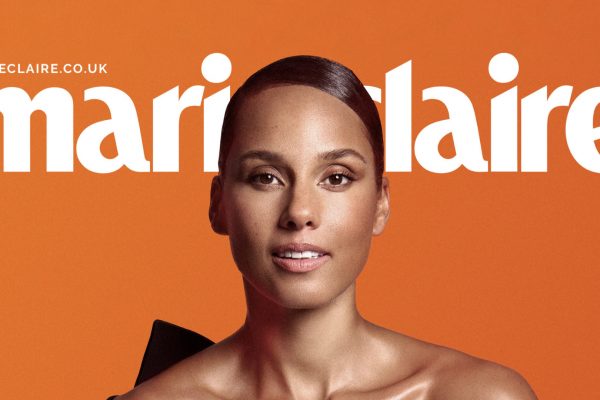Marie Claire, GQ, and 50 Best on taking a modern approach to international publishing
At the PPA Festival last week, we were treated to a first-class session on cross-border publishing, hosted by Editor-in-Chief of Marie Claire, Andrea Thompson, and featuring Adam Baidawi, Head of UK Editorial Content & Deputy Global Content Director for GQ and William Drew, Director of Content, The World’s 50 Best Restaurants.
We know that the worlds of licensing, syndication, and distribution are changing – not least because of the shift towards digital, which has of course accelerated in recent years. We recently reported on a new deal that has been forged between Future Publishing Limited and The Content Exchange – a global digital marketplace where publishers and creators can offer or license quality content directly from one another.
In the case of Marie Claire, the further internationalisation of its content has been a particularly interesting story. After Future acquired Marie Claire US in May last year, the brand has been particularly interesting this year, the first ever joint UK & US Marie Claire cover – featuring Alicia Keys – was launched.

At the PPA Festival, I asked Andrea Thompson how the brand is approaching international publishing today.
“We have twenty six issues around the world, and they still tend to work relatively independently of one another,” she said. “But we are increasingly looking to collaborate internationally more, and for example during the pandemic we launched a series of collaborations across themes like changemakers, women’s empowerment, supporting health workers worldwide, and sustainability. We speak with other editors around the world on a weekly basis, and try to work together as much as possible, especially where that can save time and resources.”
“The other thing of course is that since I came in as Editor-in-Chief, we have become fully focussed on digital content an e-commerce. We’d never rule out doing print again in the future, but looking at things digitally does mean that we don’t necessarily have to worry about conflicting issues so much in different territories.”
For Adam Baidawi and GQ, print remains an integral part of the publishing strategy, and so this can prove problematic in terms of harmonising content internationally. Since he has been in place at the publication, the Editor says he has gone to great efforts to increase international cooperation, and as a result simultaneously reduce costs.

“It became apparent that in our 21 international incarnations, what we had was 21 very disjointed businesses,” says Baidawi. “And the magazines were often very different. Some were big hypebeasts with a focus on photoshoots, while other versions felt more like extended weekend supplements.”
“Also, the way we were doing things was just incredibly inefficient. I distinctly remember that during one particular nine week window, three different GQ’s carried out three different shoots with Rami Malek, each putting him on the cover. Now I love Rami Malek, but it was to absolutely no-ones benefit to do three separate shoots for three separate magazines! So at the end of 2020 we basically started getting incredibly organised from a cross-border standpoint, and our global editorial strategy is now led by a global leadership committee, which is a bit like the UN of GQ!”
With a more joined-up approach around the world, the Editor says that GQ can not only work to greater efficiencies, but also increase its reach in certain areas.
“The celebrities that we cover – and their agents in particular – love this approach. Imagine being able to go to Brad Pitt and say ok please give us eight hours of your time, and for that we’ll put you on four continents across however many issues it ends up being. You’re in, you’re out, you’ve got your promotion, and it’s global.”
“And in a funny way because we do that – i.e. join-up the big celebrity cover stories, it means we already have that consistency across issues as a starting point. So behind those pages we can then start to get a lot more granular and individual, and that’s where a lot more of the local market stories come in.”

The World’s 50 Best Restaurants – published by William Reed – is unique in the sense that it’s very subject matter is dependent upon a hyperlocal approach, and the journalists working in each market need to have an in-depth knowledge of what surrounds them.
The publication began life 20yrs ago by creating a list of restaurants in different parts of the world and having people write about them. Since then, the concept has grown to include multiple offshoots, and a comprehensive database of establishments across the globe. Headquartered in the UK, Direct of Content, William Drew, says it’s vitally important that the publication views itself as a global brand.
“We took the decision early on to view ourselves as an international organisation that happened to be based UK. Certainly we would not think of ourselves as a ‘British brand’. While many of our staff our UK based, we have built an extensive network of professions around the world, and even the team within the UK is made up of a very international background. So you could say that we are quite centralised in terms of final content, but this is created from a hugely international perspective.”
“We’ve launched in North Africa and the Middle East, and that’s been quite an interesting market actually. Because obviously over the last few years people have become more and more sensitive to ideas of cultural appropriation, or applying kindof ‘western standards’ to eastern markets. So we’re always as sensitive as we can be when working in international markets, but believe that food and drink are one of the great unifiers in this world – they literally bring people together around a table, and that’s a great soft power that we want to celebrate and champion.”








